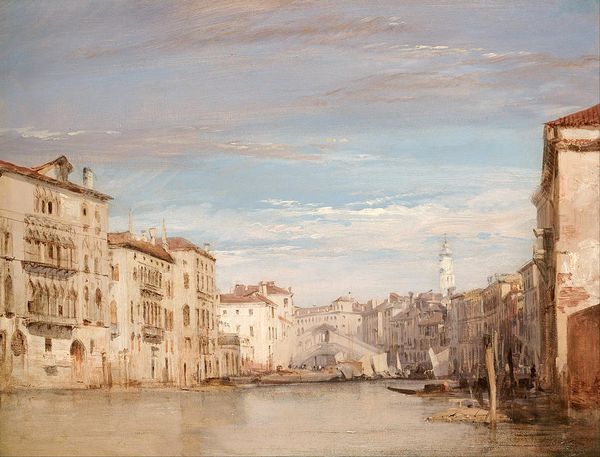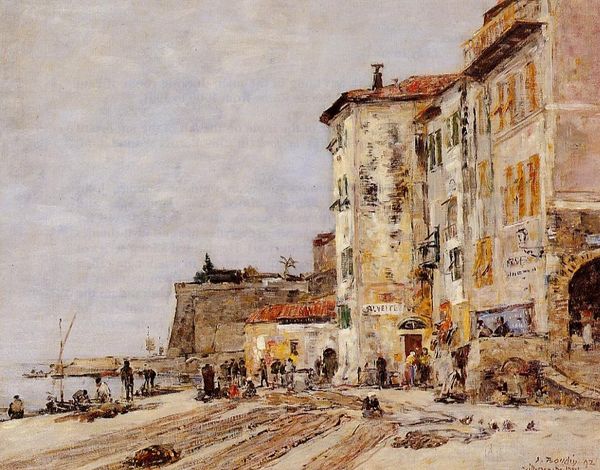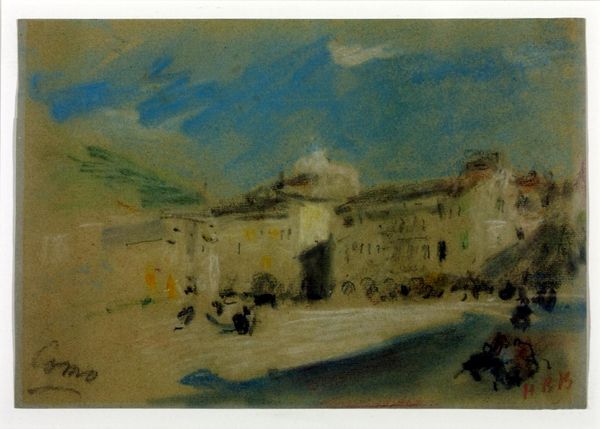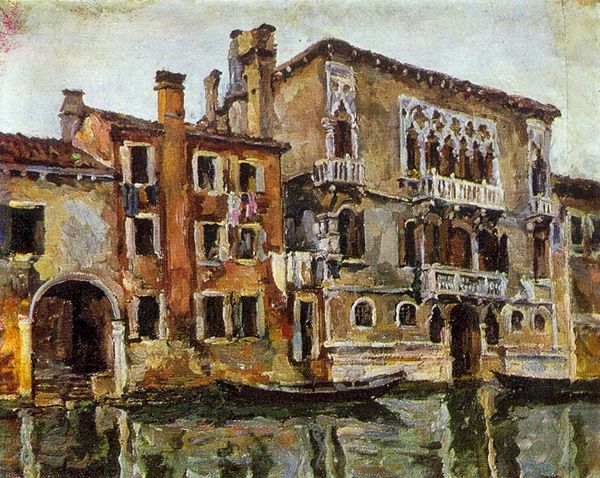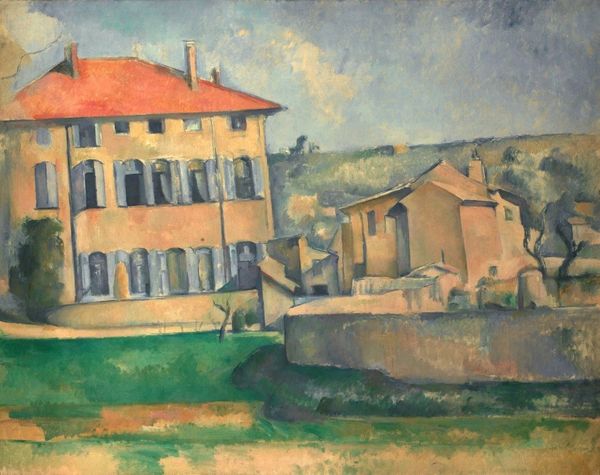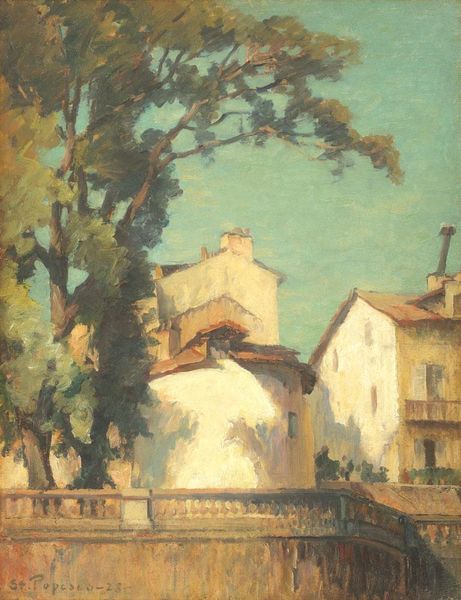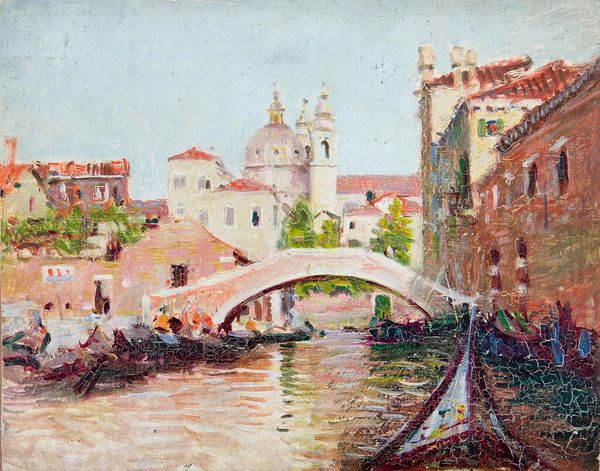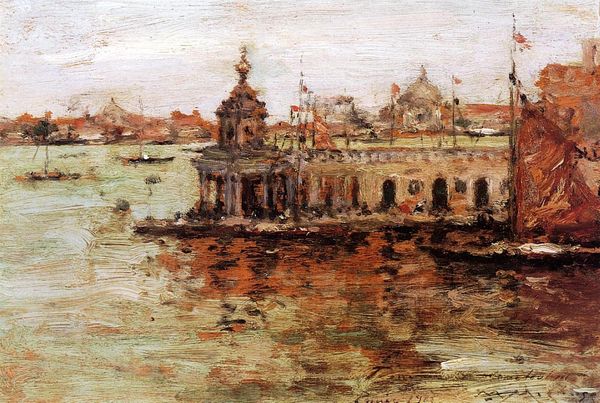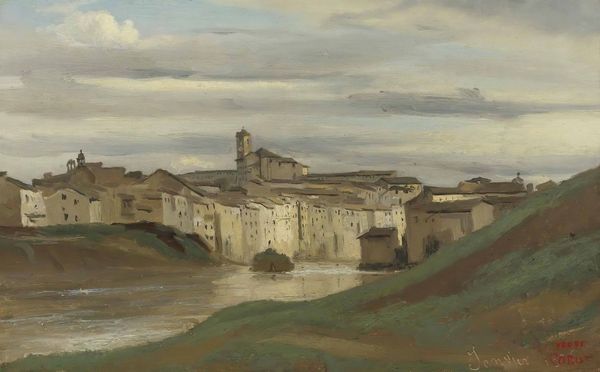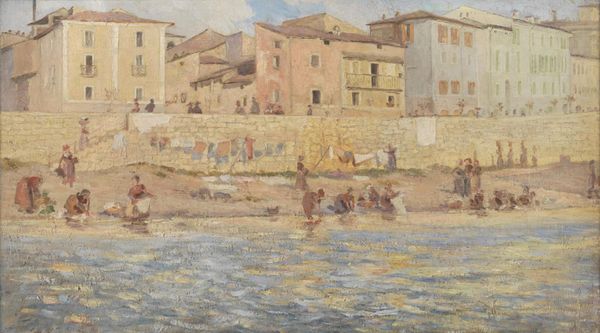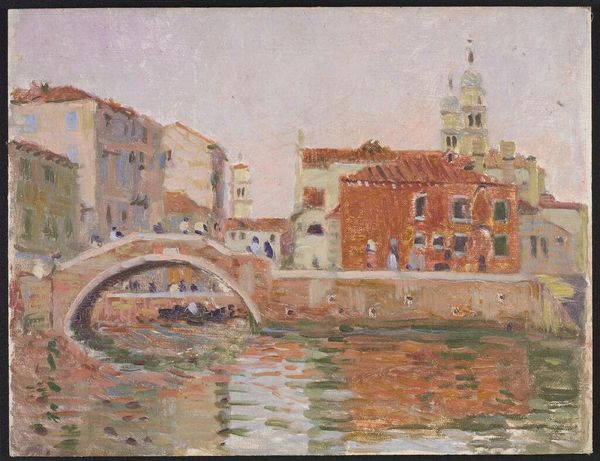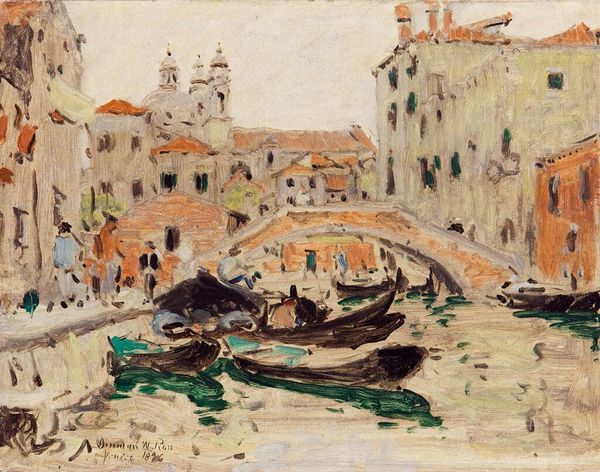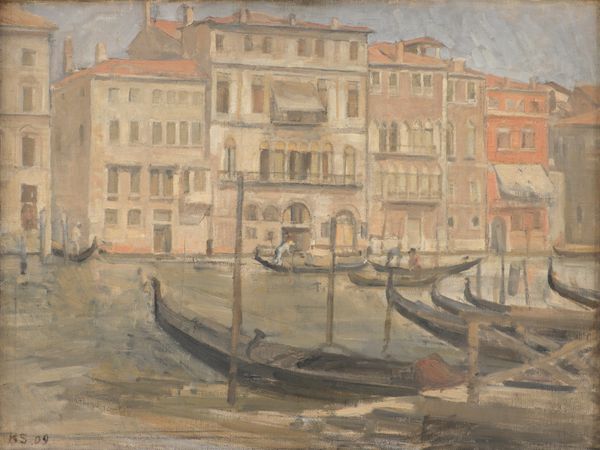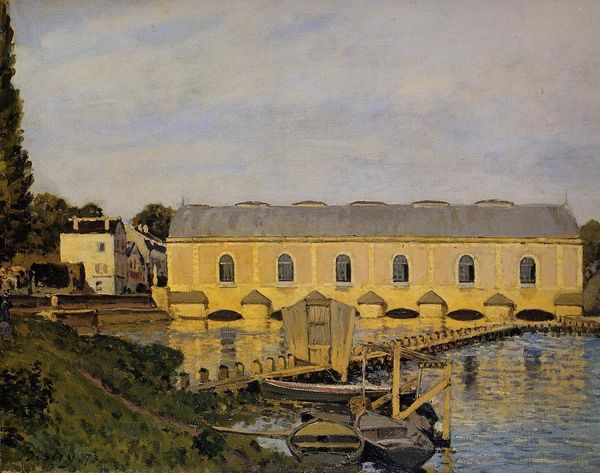
painting, oil-paint
#
painting
#
impressionism
#
oil-paint
#
landscape
#
impressionist landscape
#
oil painting
#
cityscape
Copyright: Public Domain: Artvee
Curator: Before us is "Florence," an oil painting attributed to William Merritt Chase, notable for his engagement with Impressionism and cityscapes. What’s your first reaction to it? Editor: Well, I'm immediately drawn to the light – that pale yellow that washes over everything, giving a dreamlike quality to what seems like a bustling Italian city. There’s something classical in the scene, balanced with a very fleeting, here-and-gone sort of feeling. Curator: Indeed. Chase was active in capturing urban environments during a time of rapid change and expansion. Works such as this demonstrate an interest in visually documenting these transforming locales, but from a perspective that also suggested progress and optimism about urbanization, reflecting the socio-cultural attitude of the United States. Editor: You can see the traditional city symbols of status: formal buildings on the right; suggestion of sculptural, classically inspired, decorations along the building's front that seem to indicate enduring values of civilization in an increasingly modern time. There is a small river too that invites further reflection. But it's not imposing—almost humble—given its historical power and significance in the western civilizations. Curator: And I think the looser brushwork, especially noticeable in the water and sky, certainly pushes this toward a modern visual language—Impressionistic. It aligns Chase with a European painting tradition while depicting American interpretations. Editor: Those quick strokes give the image energy, as if it captured a sensory impression more than a photographable moment in history. Curator: Right. The composition is arranged to provide the sense of movement and spontaneity of a moment in the city, contrasting with the older architectural structure behind. I'd say this tension represents a tension Chase observed in Western society itself at that period. Editor: I keep circling back to the yellow hue and all its implications. Yellow represents happiness, which aligns with progress. But yellow can mean caution, or illness too, reminding us of how the future may unfold... a nice complexity overall. Curator: It is a visual balancing act. The work encourages its viewers to examine this transformative period from multiple vantage points. Thanks for taking that walk through it with me. Editor: It has given me so much to think about. It helps show how art contains messages to our present by exploring the symbols that make us human and that mark our shared human journey.
Comments
No comments
Be the first to comment and join the conversation on the ultimate creative platform.
